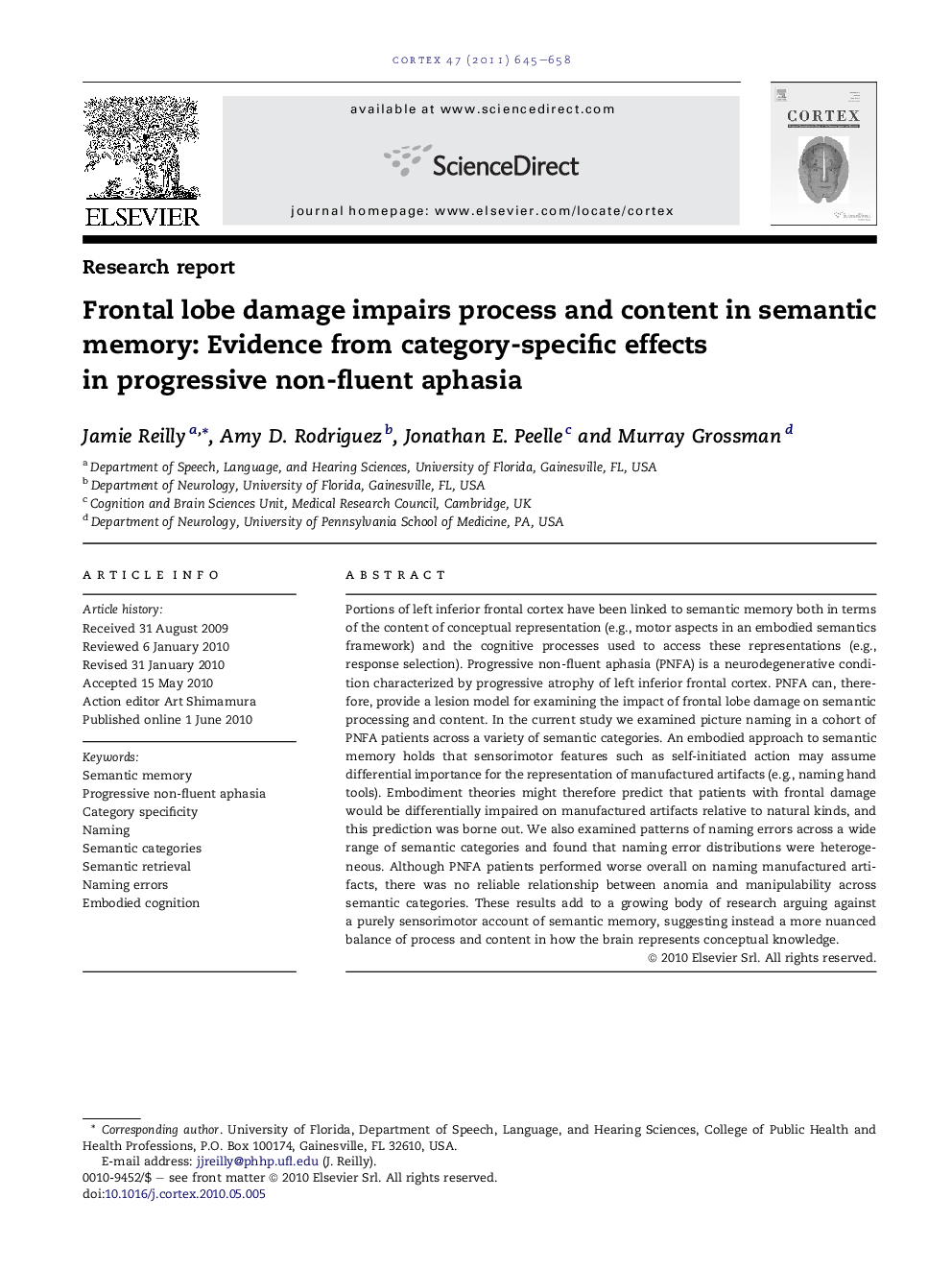| Article ID | Journal | Published Year | Pages | File Type |
|---|---|---|---|---|
| 942344 | Cortex | 2011 | 14 Pages |
Portions of left inferior frontal cortex have been linked to semantic memory both in terms of the content of conceptual representation (e.g., motor aspects in an embodied semantics framework) and the cognitive processes used to access these representations (e.g., response selection). Progressive non-fluent aphasia (PNFA) is a neurodegenerative condition characterized by progressive atrophy of left inferior frontal cortex. PNFA can, therefore, provide a lesion model for examining the impact of frontal lobe damage on semantic processing and content. In the current study we examined picture naming in a cohort of PNFA patients across a variety of semantic categories. An embodied approach to semantic memory holds that sensorimotor features such as self-initiated action may assume differential importance for the representation of manufactured artifacts (e.g., naming hand tools). Embodiment theories might therefore predict that patients with frontal damage would be differentially impaired on manufactured artifacts relative to natural kinds, and this prediction was borne out. We also examined patterns of naming errors across a wide range of semantic categories and found that naming error distributions were heterogeneous. Although PNFA patients performed worse overall on naming manufactured artifacts, there was no reliable relationship between anomia and manipulability across semantic categories. These results add to a growing body of research arguing against a purely sensorimotor account of semantic memory, suggesting instead a more nuanced balance of process and content in how the brain represents conceptual knowledge.
